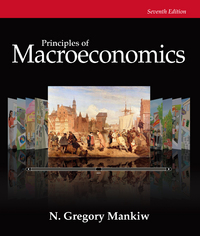Question
During recessions and economic hard times, many people - particularly those who have difficulty getting bank loans - turn to pawnshops to raise cash. But
During recessions and economic hard times, many people - particularly those who have difficulty
getting bank loans - turn to pawnshops to raise cash. But even during boom years, pawnshops can be
profitable. Because the collateral that customers put up (such as jewelry, guns, or electric guitars) is
generally worth at least double what is lent, it generally can be sold at a profit. And because usury laws
allow higher interest ceilings for pawnshops than for other lending institutions, pawnshops often charge
spectacularly high rates of interest. For example, Florida's pawnshops charge interest rates of 20% or
more per month. According to Steven Kent, an analyst at Goldman, Sachs, pawnshops make 20% gross
profit on defaulted loans and 205% interest on loans repaid.
a. In 2012 there were about 15,000 pawnshops in the United States. This was much higher than in
2007, when the number was about 12,000. Why did the number increase?
b. In a particular small city, do the pawnshops constitute a perfectly competitive industry? If not,
what is the market structure of the industry? Explain.
c. Are there considerable barriers to entry in the pawnshop industry? (Note: A pawnshop can be
opened for less than $250,000, but a number of states have tightened licensing requirements
for pawnshops.)
Step by Step Solution
There are 3 Steps involved in it
Step: 1

Get Instant Access to Expert-Tailored Solutions
See step-by-step solutions with expert insights and AI powered tools for academic success
Step: 2

Step: 3

Ace Your Homework with AI
Get the answers you need in no time with our AI-driven, step-by-step assistance
Get Started


